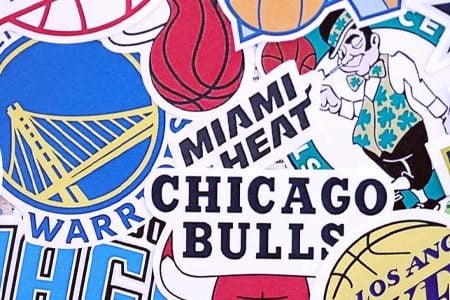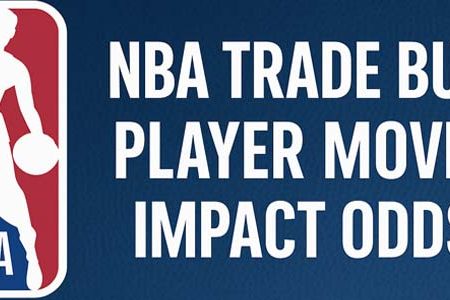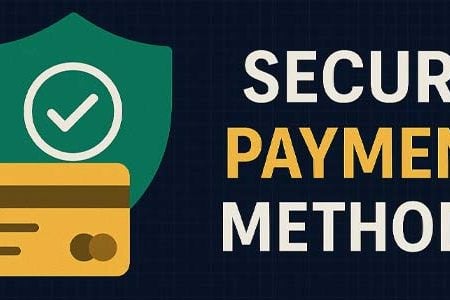While browsing the best Florida NBA sportsbook, the figures displayed aren’t solely prices; they’re pieces of a puzzle. Oddsmakers don’t come up with them randomly. Each half-point, each plus sign, and every change in juice contains a story regarding their expectations for the game and how the bettors are behaving. Knowing that ‘language’ makes the difference between a random guess and a calculated bet.
Point Spreads Are Prediction and Protection
A spread isn’t a flat forecast—it’s a balancing tool. Consider Miami as a -6.5 favorite against Orlando. That’s not a pure “we think Miami will win by 7.” It’s a number set to balance bets wagered on both teams. If a lot of bets come in for Miami, the book might adjust the spread to -7 or even -7.5. That change isn’t just about how the teams will play—it’s how the betting public (and occasionally smart money) expects the game to unfold. You want to see how opening lines are set and settled? That gap retells the game’s bets.
Moneyline Odds and Implied Probability
Seeing -200 for Boston means there is about a 66.7% implied probability. On the other hand, +170 suggests the underdog has just under a 37% probability. While it may seem like there is a 100% total, in reality, it does not add up because the remainder is the sportsbook’s hold. In case you want to reverse-engineer these numbers, the following formula has to be applied.
For negative odds: implied probability = (-odds) / ((-odds) + 100)
For positive odds: implied probability = 100 / (odds + 100)
With the aforementioned formula, it becomes easier to see the comparison and estimate alongside the book’s numbers. If a bettor believes a team has a better chance than what the implied percentage suggests, then there’s value. If not, it’s better to just pass.
Over/Under Totals Are More Than Pace
It seems totals fit pace-and-efficiency as a singular metric; are both teams expected to score over or under the line? But they also factor in recent shooting streaks, injury reports, travel schedules, and even the habits of the officiating crew. A total going down from 232.5 to 230 suggests sharp money believes either a slower game is in store, or important scorers are likely to sit. The opposite is also true; a sudden bump could indicate optimism for the scoring pace or positive tempo in the game.
Why Line Movement Timing Matters
Understanding where a spread moved over time is different from knowing when it happened. Early moves, especially seconds after a game opens, are a sign of respected players. These are people whose bets will affect the odds. Late moves just before the game is set to begin could come from confirmations of the lineup or a rush from the public to place bets. If you closely monitor both, you uncover the gap between professional sentiment and mass public opinion. That is priceless.
Props Reveal Hidden Matchups
For instance, player props may be disregarded; however, this is frequently where oddsmakers show the most specific insights. For example, if Bam Adebayo’s rebound line is set unusually high, the pattern anticipates that the Orlando big men will have difficulty blocking him. The same pattern occurs even outside of player statistics on occasions that are specific to a game. Knowing the NBA player props betting helps identify weaknesses and tendencies before players put them into action on the court.
Reading the Juice
It’s pretty typical for both sides of a spread to be tagged at -110. However, noticing one side at -115 or -120 and the other at +100 implies the book is changing payout without actually moving the line. That’s a softer sign of activity imbalance. It helps the oddsmaker say, “We’re leaning a little, but not enough to shift the spread.” To bettors, that’s a clue that there could be a bigger shift down the line if there is an influx of bets on the same side.
Injury Reports in Context
It’s safe to say that injuries will be processed at a fast pace. Context still matters, though. If a key player is ruled out and the spread adjusts by two points, one has to ask if that number represents actual on-court value or just public reaction. Some players are known to have bigger reputations than the measurable impact they have. Answering that question helps determine if a player’s absence justifies the line move or if it’s an overreaction that can be exploited.
Situational Angles
Not every shift happens due to a roster change. Odds take into account consecutive games, long-distance travel, and letdown circumstances after major wins. These factors, combined with public sentiment, are already accounted for. However, if public sentiment pushes these odds even further in that direction, it’s a sign that they are being influenced by narrative—factual or not.
Public vs. Sharp Money
Tracking bet percentage against money percentage is a useful tool to see who’s influencing the market. For instance, if 70% of tickets are on the Lakers but only 45% of money is placed on them, it means that bigger bettors are fading the public. Sportsbooks respect that money more, and odds will often follow it. Many oddsmakers shade lines slightly toward sharp money—where they expect sharp money to be.
Live Odds as Real-Time Feedback
With in-play betting, the odds update in real-time during the match, but they also rely on an algorithm predicting the outcome of the remaining time. If a favorite’s line shortens significantly without a major scoring event, the reason could be the bookmaker’s models accounted for some structural flaws in the scoring that aren’t apparent yet. If you focus on those changes, it is possible to forecast the next few possessions.
Key Numbers in Basketball
Key numbers in the NFL stand out because of the scoring. In basketball, while they are less rigid, they still exist. Numbers such as 3, 5, 7, and 10 tend to occur frequently because of scoring sequences, which are three-pointers and two-possession leads. Sports bettors are aware of this and are likely to set a line around these numbers. If you focus on this, you understand why some lines seem to remain stagnant as they get close to crossing to the next line.
The Psychological Layer
Odds aren’t just about prediction—they’re about behavior. Books know certain teams, like the Lakers or Warriors, attract disproportionate public interest. Lines may open slightly inflated on these teams to capitalize on fan loyalty. That doesn’t mean you fade them blindly, but recognizing this bias can keep you from paying a “popularity tax.”
Correlated Markets
Sometimes, different markets move in sync. A jump in a team’s point total often correlates with a shorter spread for them or a higher game total overall. Oddsmakers keep these aligned, but sharp moves in one market can sometimes be spotted in another first. Cross-referencing lines can give you a lead on where the rest might head.
The Impact of Rested Starters
When a team locks up playoff position, late-season games can see unexpected resting of starters. Oddsmakers may delay releasing lines or keep them soft until confirmation. If you follow beat reporters and can spot rest patterns before they’re public, you can grab early numbers before they adjust sharply.
How to Apply the Signals
Decoding odds isn’t about predicting every game—it’s about identifying edges. That might mean recognizing an inflated spread due to public overreaction, spotting value in a prop market that hints at a coaching strategy, or catching a misaligned total before the book corrects it. Every number is data. The key is knowing which data points matter and which are just noise.
Frequently Asked Questions
Q: How to choose the best California NBA betting site for your needs?
A: Look for competitive odds, fast payouts, a clean interface, and markets you actually use. Compare sign-up bonuses, but don’t let them be your only factor—especially when evaluating California NBA betting sites.
Q: What does a -110 line mean?
A: It means you must wager $110 to win $100. It’s the standard “juice” charged by sportsbooks.
Q: Why do odds change after I place a bet?
A: Because money keeps coming in from other bettors, and the sportsbook adjusts lines to balance action.
Q: Is a big line move always a sign of sharp money?
A: Not always. It could be an injury update, weather (in outdoor sports), or heavy public action.
Q: What’s the difference between spread betting and moneyline betting?
A: Spread betting involves a margin of victory, while moneyline betting is simply on who wins the game outright.
Seeing the Board Like the Book
Every number you see is a calculated move by oddsmakers. They’re balancing risk, predicting performance, and anticipating how thousands of bettors will react. When you start reading those numbers as signals rather than just options, your perspective changes. You stop guessing and start interpreting. That’s when you’re no longer just playing along—you’re playing with purpose.












